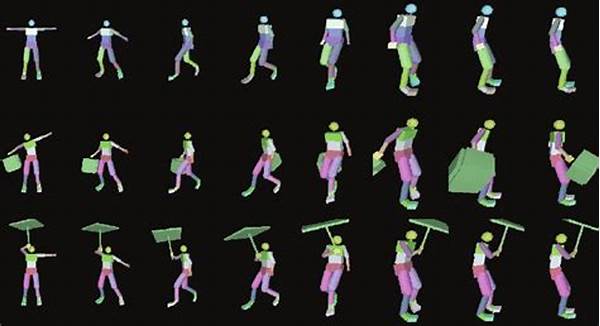Hey there, fellow animation enthusiasts! Today, we’re diving into the fascinating world of physics-based animation systems. Now, I know what you’re thinking: “That sounds super technical!” But worry not; we’re going to explore it in a fun, casual way. Trust me, by the end of this, you’ll be the go-to person at parties to explain why those animated leaves in movies look so darn real.
Read Now : Gratis Game Developer Assets
Understanding Physics-Based Animation Systems
So, what are physics-based animation systems, anyway? Think of them as the secret sauce behind making animations look as lifelike as possible. These systems use the principles of physics to simulate real-world scenarios. Whether it’s the way a ball bounces or how cloth moves in the wind, these systems create movements that are as natural as possible. This isn’t just about making things pretty, though! It’s about creating an immersive experience that tricks your brain into thinking what you’re watching could be real. And in an era where realism is king, physics-based animation systems are the artists’ best friend.
When you dive into physics-based animation systems, you start to appreciate the sheer amount of detail and work that goes into creating even a single scene in an animated film. It’s not merely about drawing or designing characters; it’s about understanding how these characters would interact in a world governed by the laws of physics. In a nutshell, these systems help bridge the gap between artistry and science. It’s no wonder that they’re the backbone of many of today’s beloved animated movies and video games.
Why Physics in Animation?
Physics-based animation systems aren’t just fancy tech jargon! They’re crucial for creating animations that are both believable and engaging. Imagine watching an animated character walk without any real weight behind each step; it just wouldn’t feel right. That’s where physics come into play!
The incorporation of physics-based animation systems ensures that every element interacts as it should. For example, when animating water, these systems allow it to flow and ripple in response to the characters, just like real water would. This is essential for immersive storytelling.
Ever notice how some animations have characters with flowing hair or realistic cloth physics? Yep, you guessed it; that’s the magic of physics-based animation systems. They allow animators to bring a touch of reality to the fantastical worlds they create.
Do you love those action-packed scenes where everything seems perfectly choreographed? Physics-based animation systems are behind that seamless integration of motion, helping every object and character move in harmony within the scene.
By leveraging physics-based animation systems, animators can focus more on creativity and less on technical limitations. This results in films and games that not only look good but feel good, too!
The Role of Technology in Animation Systems
Let’s face it—technology is the unsung hero behind the curtain of every mind-blowing animated feature. Without physics-based animation systems, we wouldn’t have the jaw-dropping detail that makes us gasp in awe. Today, these animation systems utilize advanced algorithms and computer processing to simulate the complexities of the real world. Think of it as a powerful symphony where technology and art march hand in hand, creating that magical experience we thrive on!
Read Now : Gamemaker Language Scripting Reference
The evolution of technology has allowed for more sophisticated and efficient physics-based animation systems. This means animators are free to experiment and push boundaries, creating animations that were once deemed impossible. As tech continues to advance, who knows what’s next on the horizon! From lifelike ocean waves to dynamic smoke trails, our animated landscapes are ever-expanding, thanks to these fantastic systems.
Delving Deeper into Physics-Based Animation
Real-World Impact of Animation Systems
We live in an age where animations aren’t just for Saturday morning cartoons. Physics-based animation systems have transcended into numerous industries, enhancing virtual reality, film, gaming, and even educational tools. Imagine being in a VR setup where every leaf moves just as it would if you were in a real forest. Now, isn’t that mind-blowing?
Not to mention film industries that have redefined storytelling by using these systems to create worlds that feel tangibly real. From giant robots battling through cities to magical spells swooshing through the air, physics-driven animation is reshaping our visual culture. Educators harness these systems too, bringing complex scientific concepts to life in interactive, engaging formats that help students understand abstract theories with ease.
The Future of Physics-Based Animation Systems
As we move forward, the potential of physics-based animation systems seems limitless. With AI and machine learning gradually integrating into these systems, the future holds even more astonishing possibilities. Imagine animations that can self-correct or adapt to user preferences on the fly—sounds like sci-fi, but it’s steadily becoming reality. The surge in demand for seamless, realistic animations will undoubtedly fuel further innovation, setting the stage for the next generation of breathtaking visual storytelling.
In summary, physics-based animation systems are reshaping the animation landscape, breaking the bounds of conventional storytelling. With the seamless blend of art and science, these systems enable unprecedented realism and interactivity. Whether you’re a seasoned animator or a budding enthusiast, the world of physics-based animation systems offers endless creativity and innovation that are bound to captivate, educate, and entertain.





